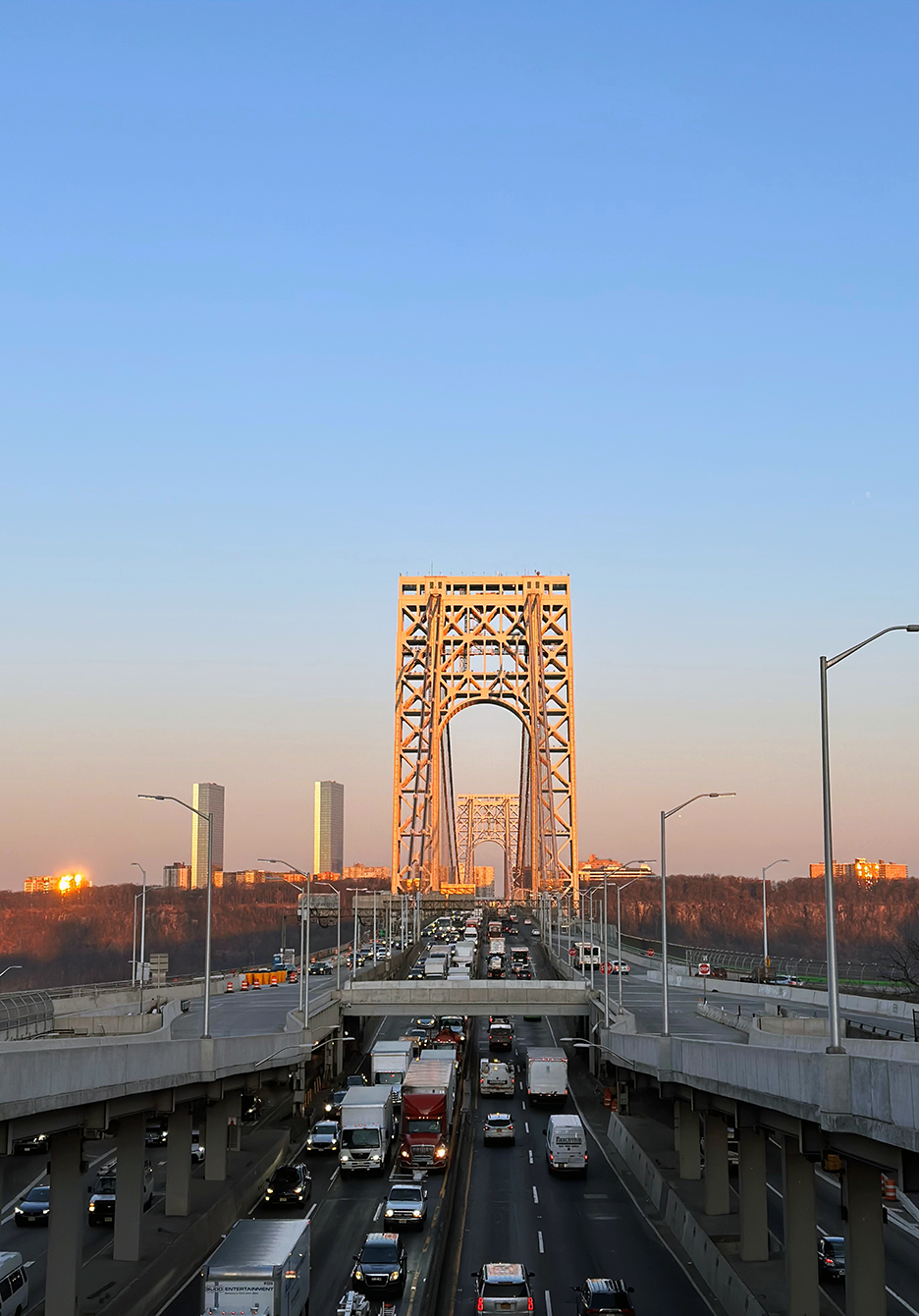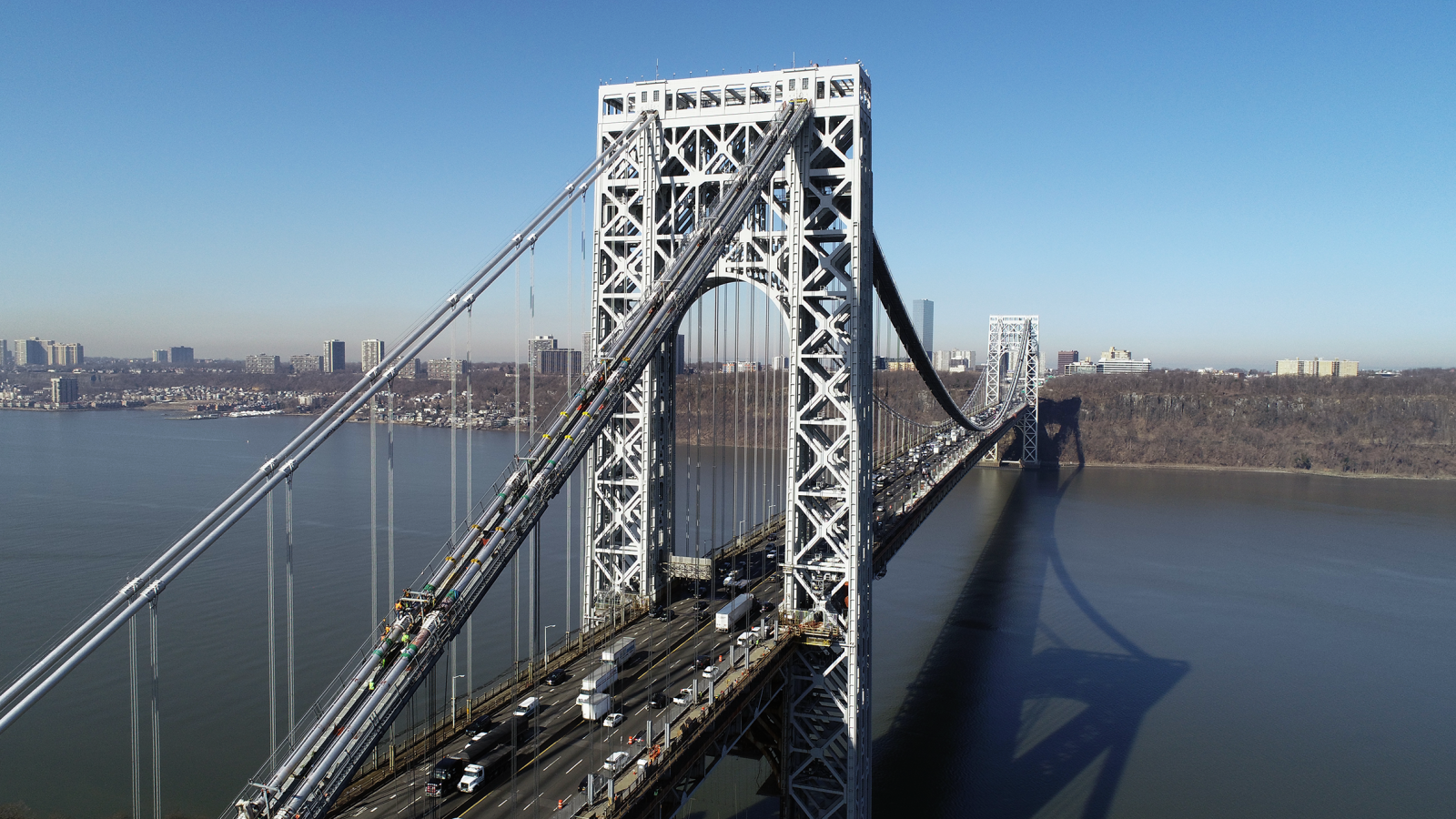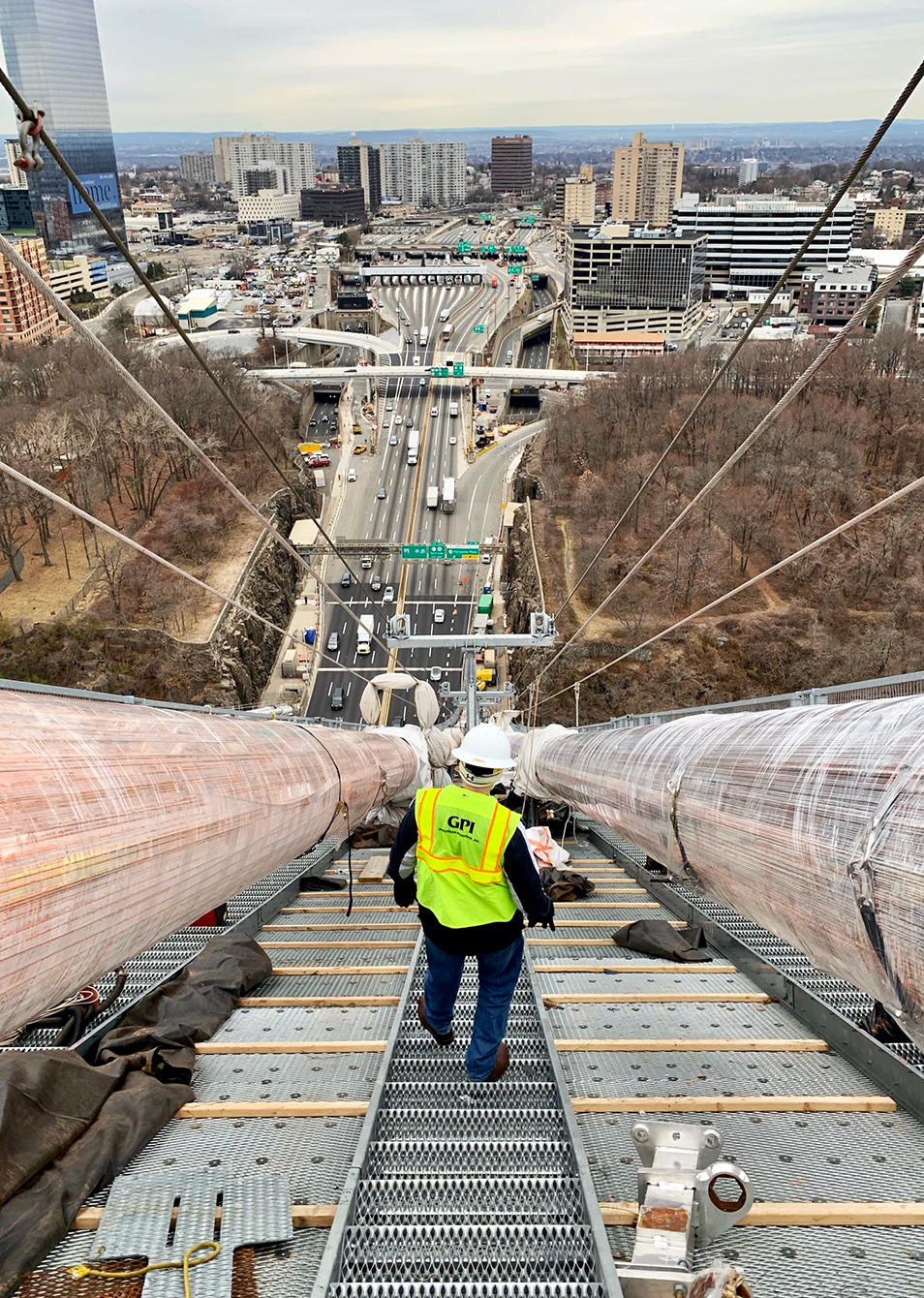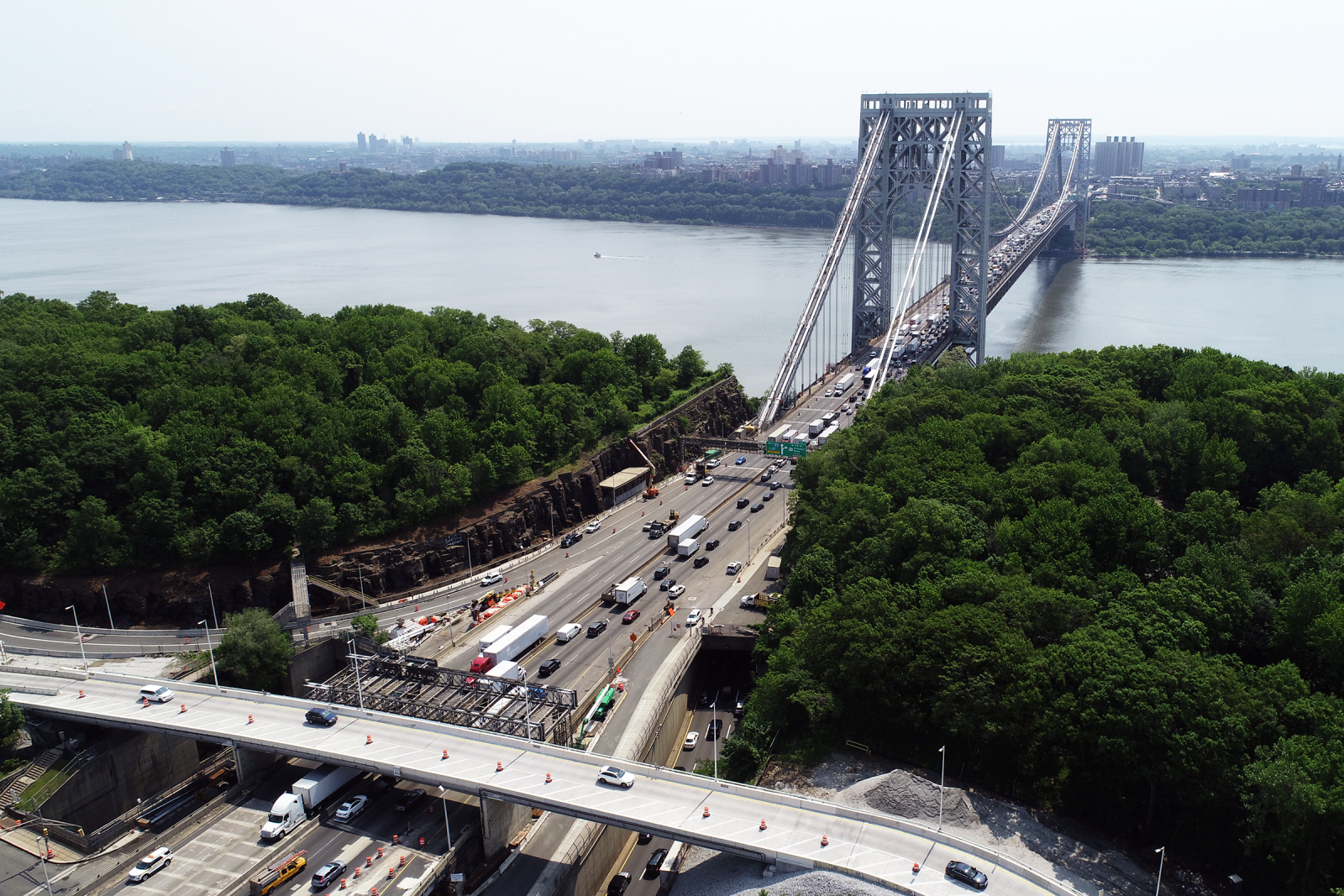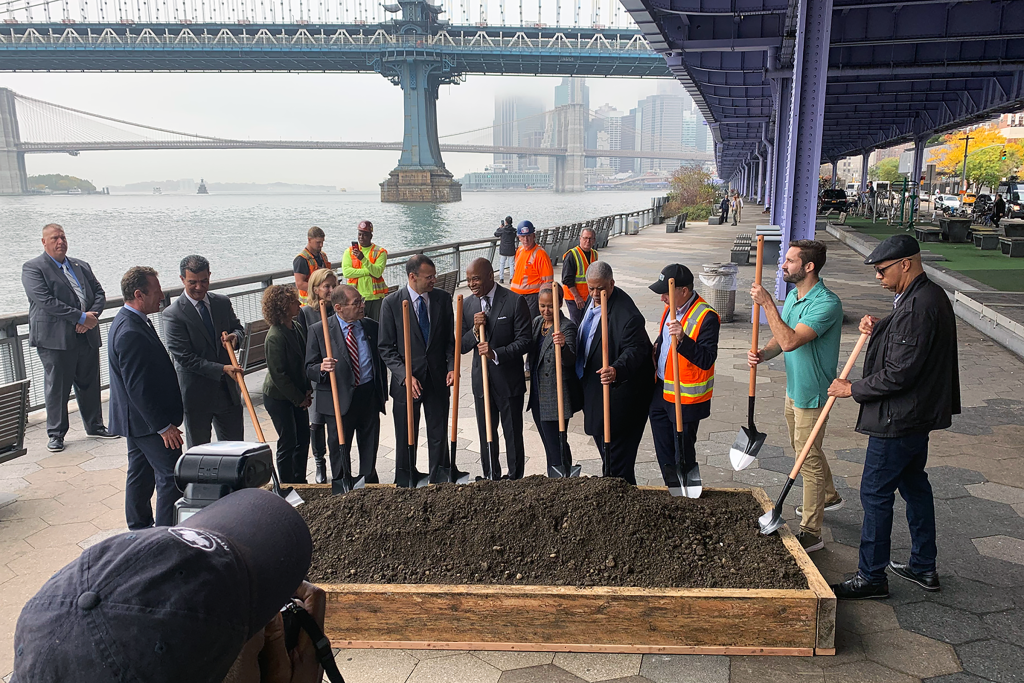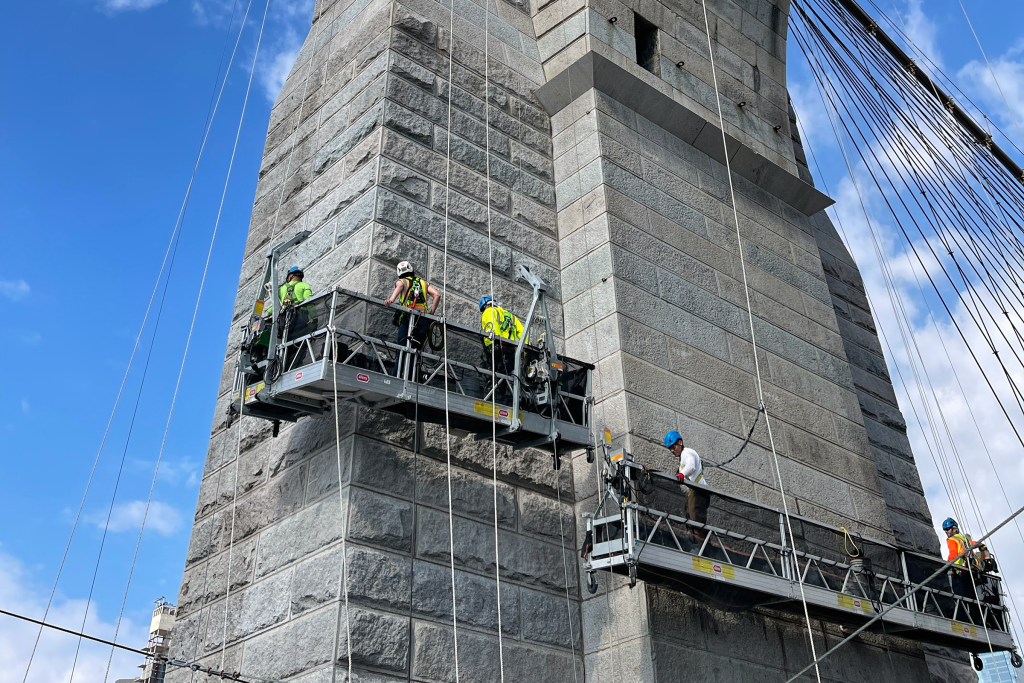The George Washington Bridge, which connects New York City’s Manhattan with New Jersey’s Palisades, is the world’s busiest motor vehicle bridge and the world’s only suspension bridge with 14 vehicular lanes. Crossing the Hudson River, it is twice as long as any earlier suspension bridge and was a marvel of its time. Under the leadership of the Port Authority of New York and New Jersey (PANYNJ), construction started in 1927, and the bridge was completed and dedicated in 1931. During the first full year of operation, more than 5.5 million vehicles used the original six-lane roadway. The two center lanes of the bridge, which had been left unpaved in the original construction, opened to traffic in 1946. The six lanes of the lower roadway were completed in 1962.
At over 90 years old now, the George Washington Bridge is still a civil engineering landmark, but age and weather take a toll on all structures. In 2015, PANYNJ launched a rehabilitation project called “Restoring the George.” The 10-year project aims to replace aging bridge components, start new construction, and supply added layers of safety and ease of travel for the public. The goal of this unparalleled construction program is to ensure the continued structural integrity of the GW well into the 21st century, minimize future unplanned closures for emergency repairs, and improve access and safety for vehicular travel, pedestrians, and bicyclists. The work includes cleaning the bridge’s four main cables and replacing, for the first time, all 592 vertical suspender ropes that hold up the roadway. A renovated bicycle and pedestrian walkway on the north side of the bridge is also part of the project. The overall project is divided into 11 parts.
GPI is supplying construction management and inspection services for parts of “Restoring the George.” A priority focus has been on the rehabilitation and dehumidification of the main cables and the suspender rope replacement for this suspension bridge. Other restoration projects included construction of a new shared-use path network and new pedestrian ramps, rehabilitation of existing bus ramps, and replacement of the bridge’s upper-level eastbound surface. GPI’s responsibilities include construction management, shop drawings, work plans, installation and erection procedures, test boring events and data, product submittals, environmental permits and controls, public notifications, and project staging.
Project Highlights
-
Owner/ClientPort Authority of New York and New Jersey
-
LocationNew York, NY, and Fort Lee, NJ
-
ServicesBridge Rehabilitation
Construction Engineering
Construction Inspection
Structural Engineering
Traffic/Transportation Engineering
